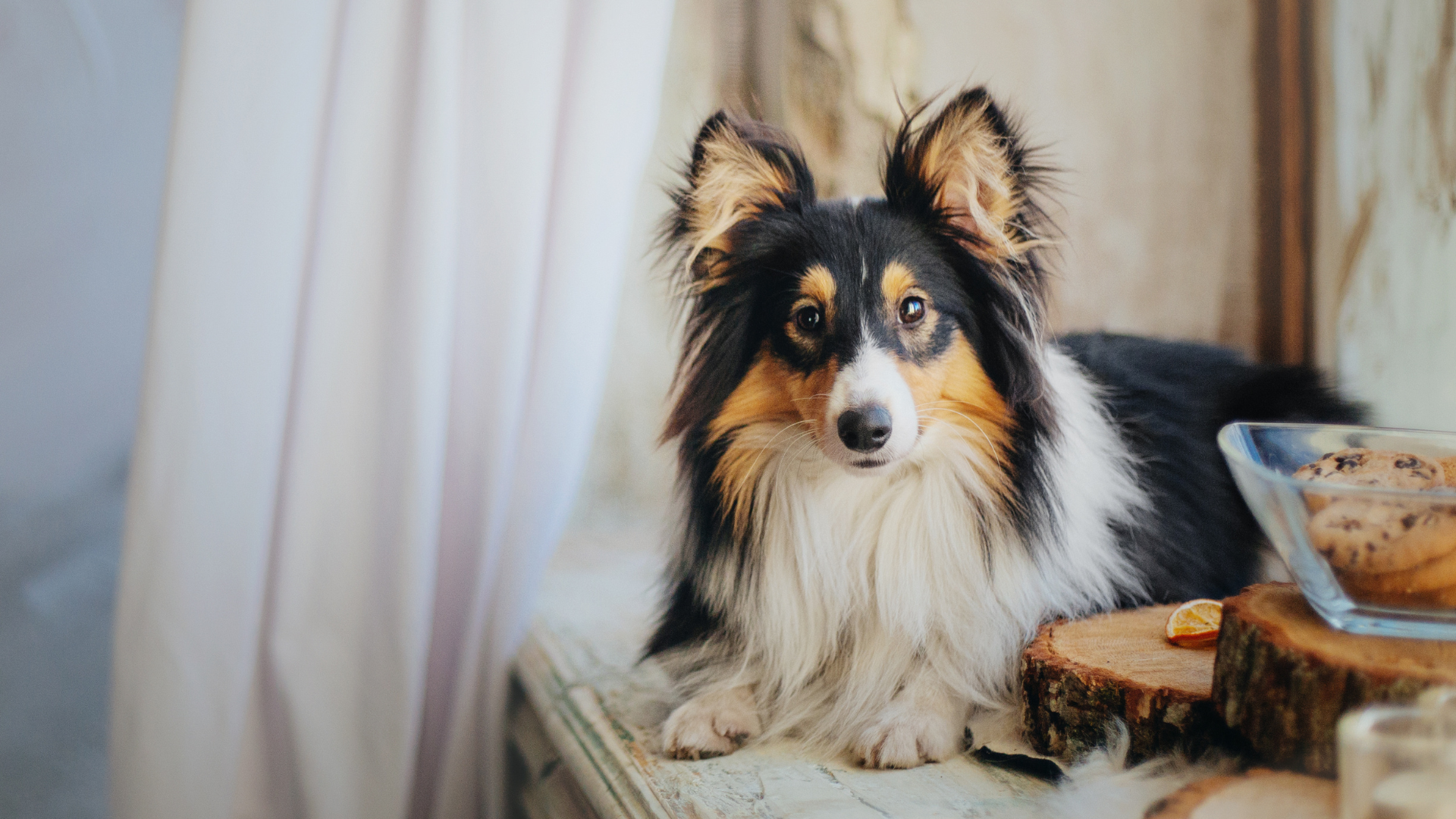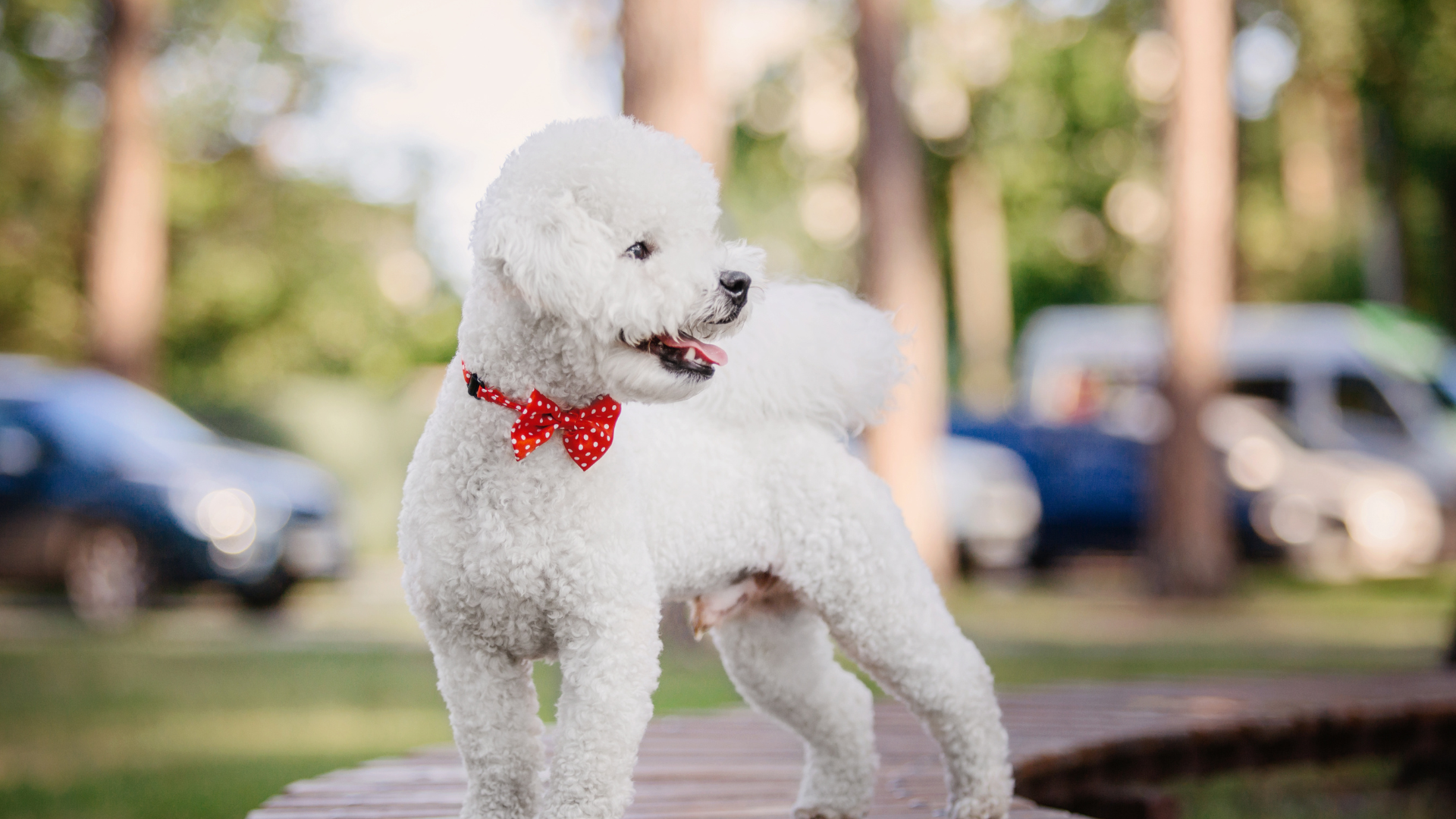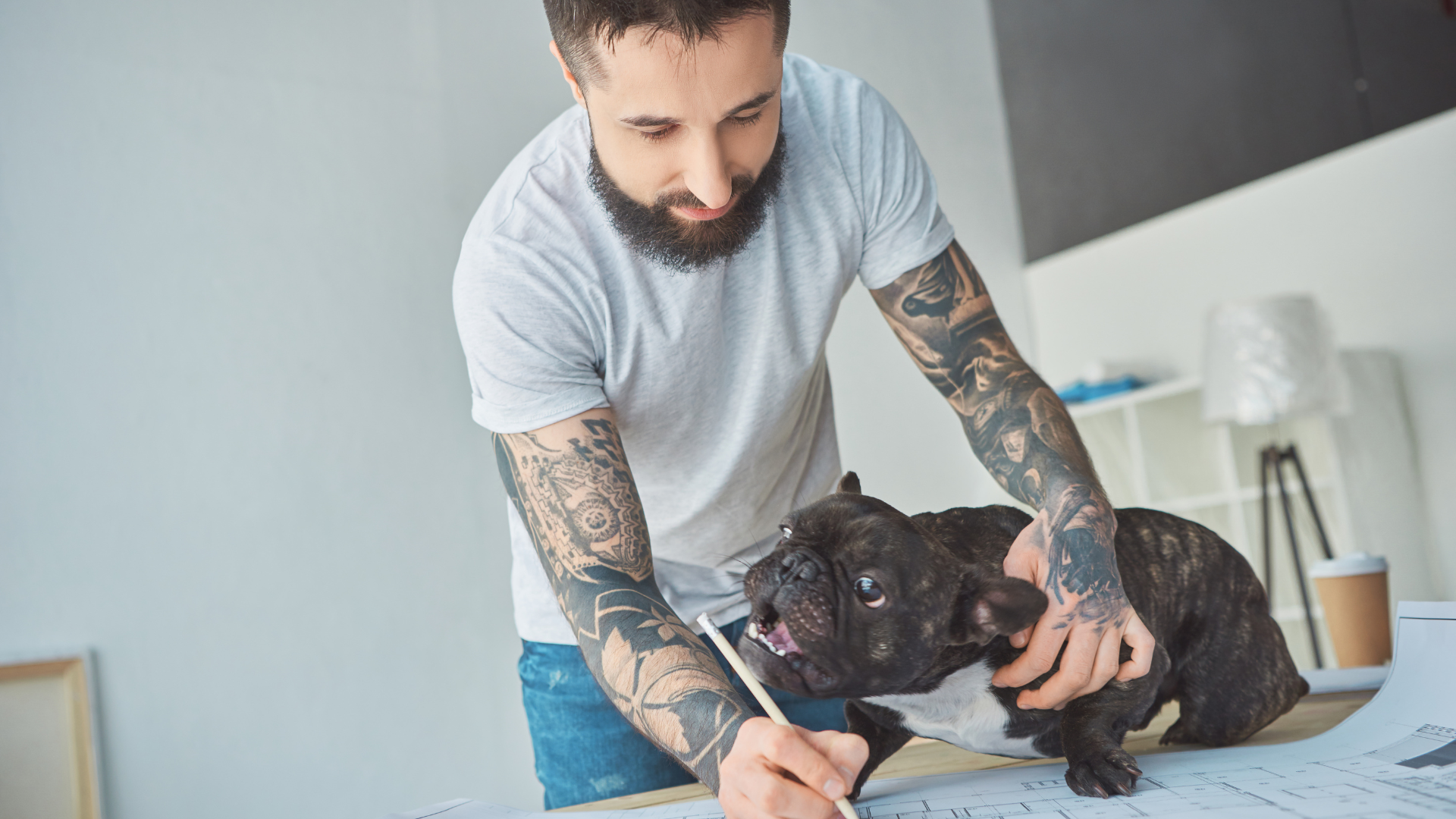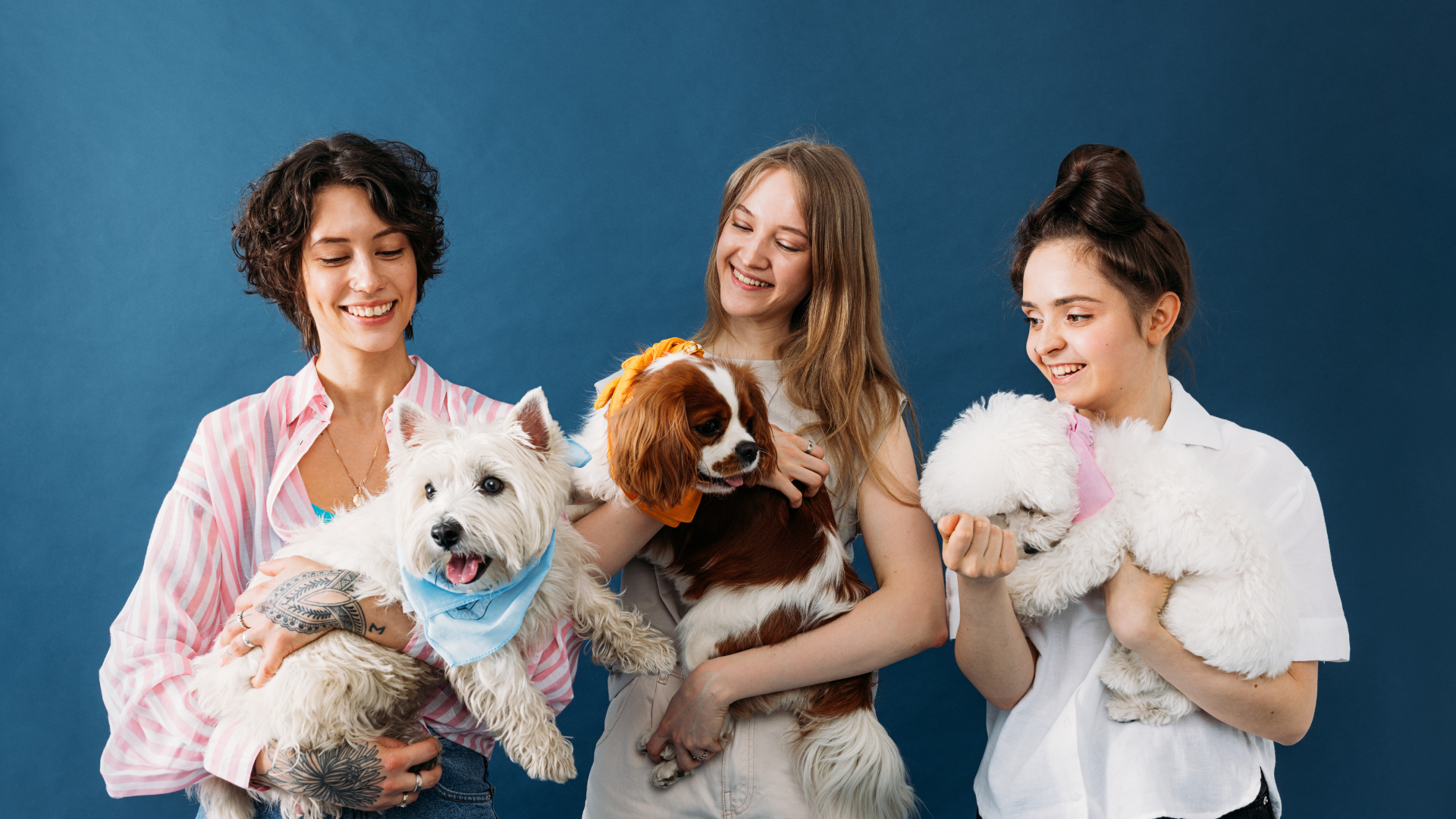Designer dogs, or hybrids, combine traits from two distinct breeds, creating pets with unique characteristics. These breeds often inherit the best qualities from both parents, offering a blend of beauty, personality, and vigor. With their special needs, providing proper care is crucial to ensure they thrive in their environments.

Understanding the unique care requirements of designer dog breeds can make a significant difference in their health and happiness. These dogs often have specific needs related to nutrition, grooming, exercise, and health monitoring that differ from purebred dogs. Tailored care can help prevent potential health issues and enhance their well-being.
Choosing the right designer dog breed involves considering your lifestyle and the specific needs of the breed. Whether it’s the energetic Labradoodle or the affectionate Cavapoo, understanding and meeting their requirements will ensure a loving and fulfilling relationship with your designer dog.
Understanding Designer Dog Breeds
Designer dog breeds are the result of deliberate crossbreeding between two purebred dogs. These hybrids often combine desirable traits from both parent breeds, leading to unique characteristics and potential health benefits. Key areas of exploration include their history, popular breeds, distinguishing traits, and comparisons with purebred dogs.
History and Development
The popularity of designer dogs surged in the 1990s and 2000s, with the Labradoodle leading the trend in the 1980s. This breed was created to provide a guide dog for a blind person with allergies, combining the intelligence of the Labrador Retriever and the hypoallergenic coat of the Poodle. Breeders began experimenting with various combinations, leading to the creation of other popular breeds like the Cockapoo and the Goldendoodle.
These hybrid dogs are the results of a trend towards combining the best qualities of different breeds. The aim is often to produce puppies with a specific set of physical traits and temperaments, while potentially reducing genetic health issues common in purebred dogs.
Popular Designer Breeds
Numerous designer breeds have become incredibly popular due to their unique characteristics. The Goldendoodle, a mix of Golden Retriever and Poodle, is known for being smart, loving, and obedient. The Maltipoo, combining Maltese and Poodle, is a small-sized breed that often has a calm temperament.
Other notable breeds include the Pomsky, a cross between a Pomeranian and a Husky, known for their striking appearance and energetic nature. The Puggle, a mix of Beagle and Pug, is famous for its charming personality and friendly demeanor.
Breed Characteristics
Designer dogs exhibit a blend of physical and personality traits from their parent breeds. For instance, the Schnoodle, a Schnauzer-Poodle mix, often has the Schnauzer’s alertness and the Poodle’s intelligence.
Physically, these dogs can vary widely in appearance, even within the same litter. This variability is part of their charm, as seen in breeds like the Bernedoodle, a mix of Bernese Mountain Dog and Poodle, which can range in size from small to large.
Purebred vs. Mixed Breed Comparison
Purebred dogs are bred to conform to a specific breed standard, which often results in consistent physical and behavioral traits. Mixed breed, or hybrid, dogs like the Cavapoo, a combination of Cavalier King Charles Spaniel and Poodle, are less predictable in their traits but may benefit from a wider genetic pool.
The main difference lies in predictability. Purebreds are more predictable in terms of traits and health issues, whereas hybrids like the Cockapoo tend to have a mix of traits from both parents, sometimes reducing the risk of genetic health problems.
Benefits of Hybrid Vigor
Hybrid dog breeds often exhibit hybrid vigor, which can result in enhanced health and vitality compared to their purebred counterparts. This vigor is due to the mixing of gene pools, which can reduce the likelihood of inheriting specific genetic disorders prevalent in purebreeds.
For instance, while a Poodle and a Cocker Spaniel might both suffer from certain conditions when purebred, their mix—the Cockapoo—might be less likely to inherit these issues. This benefit often contributes to the growing popularity of designer dogs.

Health and Wellness
Ensuring the health and wellness of designer dog breeds involves understanding their specific health concerns, providing appropriate nutrition, ensuring adequate exercise, and maintaining regular veterinary care.
Common Health Concerns
Designer dog breeds can be prone to several health issues inherited from their parent breeds. Hip dysplasia is common in larger hybrids like Labradoodles, often resulting in joint pain and mobility issues. Respiratory problems are frequently seen in breeds with brachycephalic features, such as the Puggle. Eye problems, including cataracts and progressive retinal atrophy, can affect breeds like the Cockapoo.
Allergies are another concern, which may manifest as skin irritations or digestive issues. Regular health monitoring and early diagnosis are crucial in managing these conditions effectively.
Proper Nutrition and Diet
A balanced diet tailored to the specific needs of each designer dog breed is essential. High-quality protein is vital for muscle development and overall health. It's important to choose dog food with appropriate protein content, which can vary based on the dog's size and activity level. Portion sizes should be carefully managed to prevent obesity, a common issue in many breeds.
Including a variety of vegetables, fruits, and grains can provide necessary vitamins and minerals. Owners should avoid common allergens and consult with a veterinarian to determine the best dietary plan for their pet.

Exercise and Activity Requirements
Designer dog breeds often require varying levels of exercise to maintain their physical and mental health. Breeds like Goldendoodles and Labradoodles benefit from regular exercise and daily walks to prevent boredom and promote cardiovascular health. Smaller breeds like the Cockapoo need moderate activity to stay fit and happy.
Exercise needs can include activities like agility training, fetch games, or running. Tailoring the exercise routine to the dog's energy level and physical capabilities is essential for preventing obesity and behavioral issues.
Importance of Regular Veterinary Care
Regular vet visits are crucial in ensuring the long-term health and well-being of designer dog breeds. Early detection of health issues, such as heart conditions or hip dysplasia, can lead to more effective treatment and management. Vaccinations, dental check-ups, and parasite prevention should be part of the routine veterinary care.
Veterinarians can also provide valuable advice on nutrition, exercise, and managing common health problems. Establishing a relationship with a trusted veterinarian ensures prompt medical attention and ongoing support for any health concerns that arise.
Training and Socialization
Proper training and socialization are core components to ensuring a designer dog's well-being and adaptability. Training focuses on obedience and behavior, while socialization emphasizes interactions with people, other pets, and environments.
Obedience and Behavior Training
Obedience training is critical for designer dog breeds due to their diverse genetic backgrounds. Utilizing positive reinforcement techniques, such as treats and praise, yields the best results. Consistent training helps address potential behavioral issues. Commands like sit, stay, and come provide a foundation for more advanced training.
Training sessions should be short but frequent to maintain the dog’s attention. Consistency across all family members and rewarding good behavior strengthens these habits. Consulting a professional trainer familiar with designer breeds might offer specialized insights.
Socialization with People and Other Pets
Designer dogs often inherit traits from both parent breeds, affecting their social behavior. To foster a well-adjusted pet, early and regular socialization is vital. Exposing puppies to various people, environments, and experiences builds confidence and positive associations.
Introducing the dog to other pets, particularly during the critical socialization period (3-14 weeks old), reduces the risk of future aggression or fear-based reactions. Regular playdates and structured interactions with other dogs and people are recommended. Enrolling in a puppy socialization class can provide both training and social opportunities.

Therapy and Service Potential
Designer dogs like Goldendoodles and Labradoodles possess qualities ideal for therapy and service roles. Their inherent friendliness, intelligence, and trainability make them suitable for tasks like emotional support and assisting individuals with disabilities.
Training for these roles requires a calm temperament and advanced obedience skills. Consistent training, exposure to varied situations, and professional guidance enhance their capabilities. These dogs must pass specific certifications to qualify as therapy and service animals. Properly trained, they provide invaluable assistance and companionship.
Training and socialization cater specifically to each breed's unique traits, ensuring a harmonious and well-adjusted pet. For more information on training methods and breed characteristics, visit here.
Grooming and Maintenance
Proper grooming and maintenance for designer dog breeds require attention to coat types, essential grooming tools, and specific lifestyle adaptations. Addressing these areas ensures a healthy and happy pet.
Coat Care and Types
Designer dog breeds have various coat types, ranging from short coats to curly coats. Short coats generally require less grooming and fewer baths but still need regular brushing to remove loose hair. Conversely, curly coats like those of poodles require frequent brushing to prevent matting and tangling.
For dogs with double coats, periodic shedding seasons demand additional grooming to manage undercoat removal. Regular bathing helps maintain a clean and healthy coat. Owner diligence in examining the skin under the coat for any signs of irritation or parasites is also essential.
Grooming Essentials
Essential grooming tools are critical for maintaining a designer dog’s coat and hygiene. Regular brushing is facilitated by using slicker brushes, pin brushes, and combs tailored to the specific coat type. For curly coats, a de-matting comb is invaluable.
Bathing should be done using dog-specific shampoos to maintain skin health. Ear cleaning is crucial as breeds with floppy ears or heavy hair growth around the ears can be prone to infections. Additionally, trimming nails, especially for active breeds, prevents discomfort and foot problems.

Lifestyle Adaptations
A designer dog’s lifestyle may influence the frequency and type of grooming. Dogs with active, outdoor lifestyles may require more frequent baths and ear cleanings due to increased exposure to dirt and debris. Regular grooming sessions help these dogs stay clean and comfortable.
For designer dogs living in urban settings, regular bathing and coat maintenance prevent allergens and pollutants from accumulating. Understanding the specific grooming needs based on a dog’s daily activities helps tailor the grooming routine effectively and enhances the dog’s quality of life.
Finding a Designer Dog
When looking for a designer dog, prospective owners should consider various factors such as selecting a reputable breeder, adopting from a rescue, evaluating the dog's care needs, and understanding the cost implications. By taking these steps, they can ensure a healthy and happy addition to their family.
Selecting a Reputable Breeder
Choosing a reputable breeder is crucial for obtaining a healthy designer breed. They should have a history of ethical breeding practices and prioritize the health of their dogs over profit. Ensure the breeder provides health clearances and genetic testing results for both parent dogs.
Visiting the breeder's facility can offer insights into the living conditions and how the dogs are treated. Look for clean, spacious environments where the dogs are well-cared for and socialized.
It's essential to ask the breeder about the dog's lineage and any potential health issues common in the breed mix. A breeder who is transparent and knowledgeable about these aspects is more likely to be reputable.

Adoption and Rescue Options
Adoption and rescue are viable options for finding a designer dog. Many rescue organizations and shelters have mixed breed dogs, including popular designer dogs like Labradoodles or Goldendoodles. These dogs may have had previous owners who, for various reasons, could no longer keep them.
Contacting breed-specific rescue groups can also be a fruitful approach. These groups often specialize in rescuing and rehoming certain designer breeds.
Adopting a dog from a rescue can be less expensive than purchasing from a breeder. Additionally, it offers a second chance to a dog in need of a home, providing both companionship and an ethically sound choice.
Considerations Before Bringing Home a Designer Dog
Before bringing a designer dog home, it’s important to understand their specific care needs and temperament. Many designer breeds are high-energy and require daily exercise and mental stimulation. Evaluate whether your living situation and lifestyle can meet these needs.
Assess the potential size and grooming requirements of the dog. Some designer breeds like the Goldendoodle have coats that need regular grooming to stay free of mats and tangles.
Consider any allergies in the household. While some designer breeds are marketed as hypoallergenic, it's best to spend time with the dog to ensure they don't trigger allergic reactions.

Cost Implications
Designer dogs can be expensive to purchase, especially from reputable breeders. Initial costs can range from hundreds to several thousand dollars, depending on the breed's popularity and lineage.
Beyond the purchase price, factor in ongoing costs such as food, grooming, veterinary care, and training. Designer breeds with specific care needs might require specialized diets or more frequent grooming sessions, adding to the overall expenses.
It's also wise to consider pet insurance to help cover unexpected medical costs. Comprehensive budgeting helps ensure you can provide the necessary care and maintain a healthy, happy life for your new pet.
By thoroughly researching and preparing for these aspects, prospective owners can make informed decisions and successfully find a designer dog that fits well with their family and lifestyle.
Living With a Designer Dog
Living with a designer dog involves adapting your household, ensuring smooth interactions with family and other pets, and understanding the long-term commitment to their unique needs. This section provides insights into making this transition as seamless as possible.
Integrating into the Household
Welcoming a designer dog into your household requires a gentle approach to help them adjust. Designer dogs, known for their unique characteristics, need a familiar space to feel secure. Start by setting up a dedicated area with their bed, toys, and water.
It’s essential to establish a routine for feeding and playtime to create structure. Regular playtime is crucial, as many designer breeds are energetic and intelligent, requiring mental stimulation. Consistent training and positive reinforcement can help them learn household rules.
Remember to puppy-proof your home. Secure loose wires, remove toxic plants, and store chemicals safely. Designer dogs often have specific care needs, so familiarize yourself with their grooming, dietary, and health concerns to ensure they thrive.
Adjusting to Family and Other Pets
Integrating a designer dog with family members and other pets takes patience. Early socialization is key to fostering positive relationships. Start by introducing them to the family one at a time, allowing them to acclimate without feeling overwhelmed.
For existing pets, it’s important to manage introductions carefully. Supervised meetings on neutral grounds can reduce territorial behavior. Gradually increase supervised interactions and monitor for any signs of aggression or anxiety.
Designer dogs, known for their friendly nature, generally adapt well to children and other pets. However, teach children how to handle the dog gently and calmly. Regular companionship and involvement in family activities will help them feel included and loved.
Long-Term Commitment and Care
Owning a designer dog is a long-term commitment that involves more than just basic care. Regular vet visits are necessary to monitor health concerns specific to their breed mix. Vaccinations, routine check-ups, and dental care should be scheduled accordingly.
Designer breeds often have particular grooming needs. Regular brushing, bathing, and nail trimming are essential to prevent health issues. Proper nutrition tailored to their size, age, and breed mix will support their overall health.
Lastly, plan for their long-term care by ensuring you have the time and resources to meet their needs. Professional help, like trainers or dog sitters, can be beneficial if you have a busy lifestyle. Ensuring they have proper companionship and care is crucial to their well-being.

Frequently Asked Questions
Designer dog breeds, known for their unique combinations, raise many questions among potential owners. This section addresses some of the most common inquiries.
- What are the essential care tips for small designer dog breeds?
- Small designer dog breeds often have specific grooming needs. For example, dogs with longer hair, such as the Cavapoo, may require frequent baths to prevent dirt buildup. Regular brushing is also necessary to avoid matting. Additionally, the Maltipoo, with its floppy ears, needs consistent ear cleaning to prevent infections.
- What are common health issues in designer dog breeds?
- Designer dogs can inherit health issues from their parent breeds. The Pomsky, for instance, might experience visual problems due to the Pomeranian’s predisposition. Joint issues, like hip dysplasia, can occur in breeds such as the Goldendoodle, inheriting it from the Golden Retriever side.
- How do the personality traits of designer dogs compare to purebred dogs?
- Personality traits in designer dogs often blend the best of both parent breeds. For example, the Labradoodle often combines the Poodle's intelligence and low-shedding coat with the Labrador's friendly disposition. This mix can result in a dog that is both easy to train and sociable.
- What are the pros and cons of owning a designer dog breed?
- Owning a designer dog breed can have various advantages. Many, like the Cockapoo, are known for their playful and affectionate nature, making them great companions. However, they can also be prone to health issues and might require more grooming than purebreds, as well as higher upfront costs due to their popularity.
- How do ethical considerations play a role in the breeding of designer dogs?
- Ethical breeding practices are crucial in the creation of designer dogs. Breeders should ensure that parent dogs are healthy and free from genetic disorders. Ethical breeders avoid raising dogs in inhumane conditions and aim to improve the breed rather than just meet market demand. It's important to research and choose breeders who prioritize the health and well-being of their dogs.
- Does the American Kennel Club (AKC) recognize any designer dog breeds?
- The American Kennel Club (AKC) does not officially recognize designer dog breeds. These dogs are typically registered with other organizations, such as the Designer Breed Registry or the International Designer Canine Registry. Despite the lack of AKC recognition, many of these breeds are well-loved and sought after for their unique qualities.